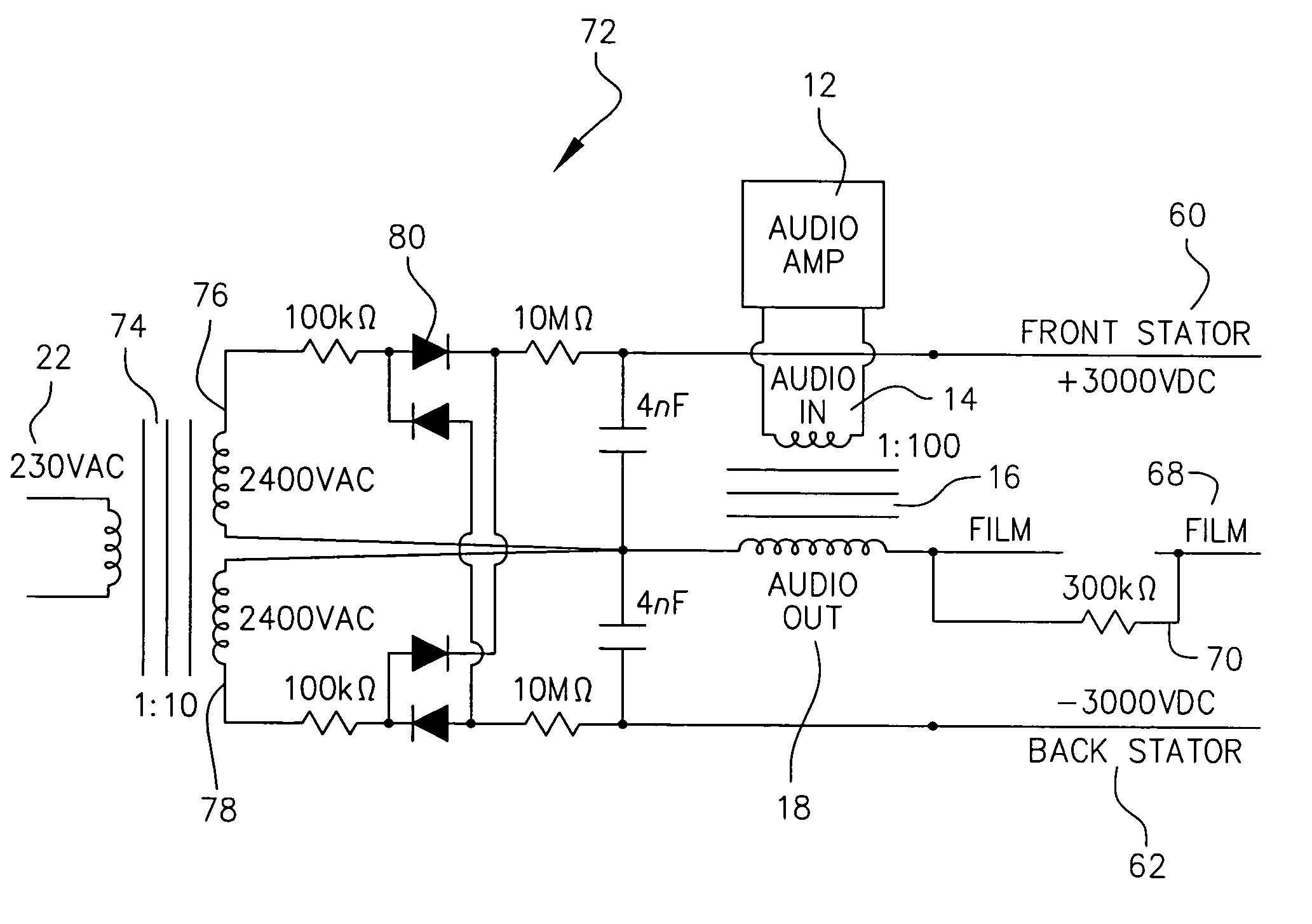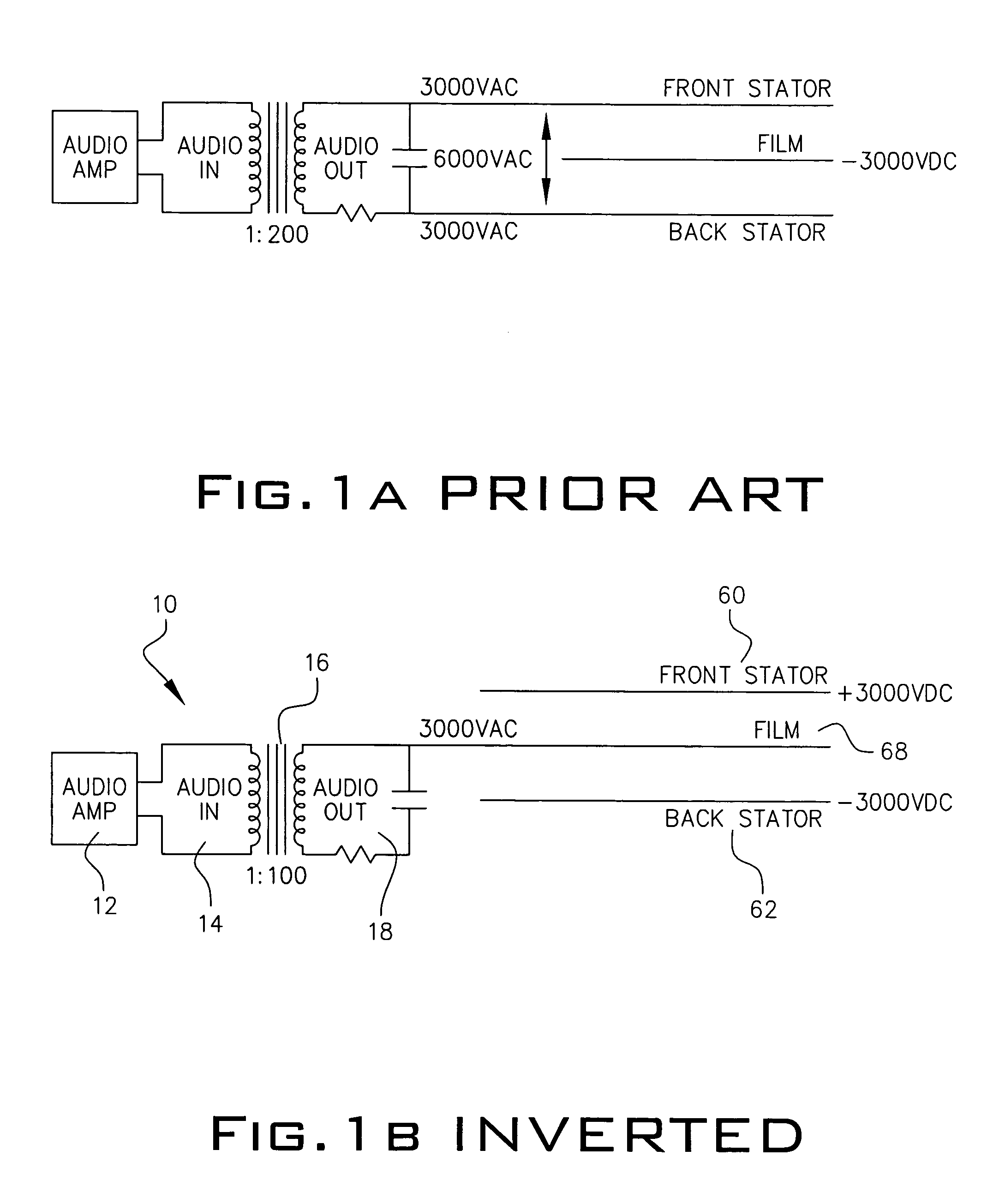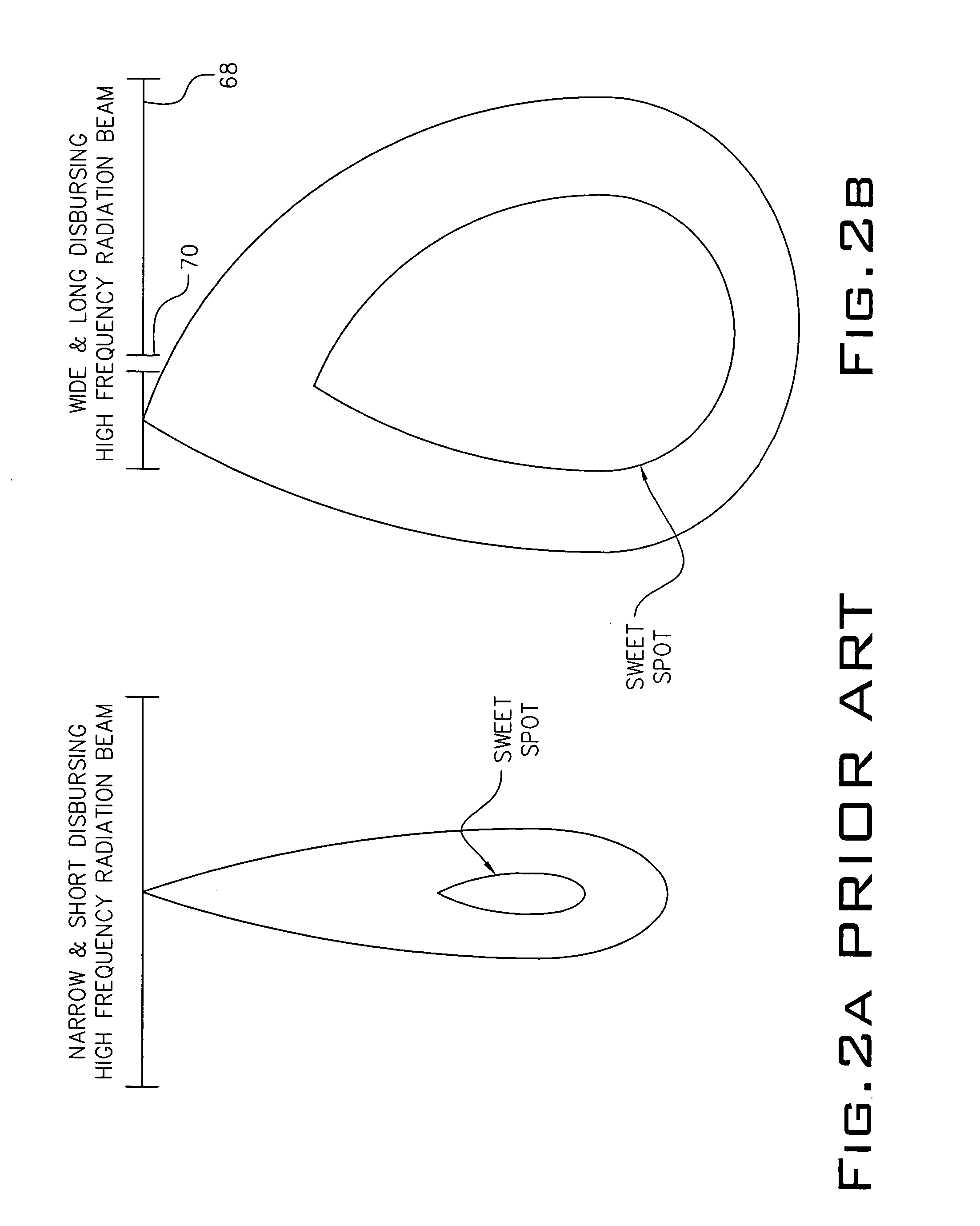Invertedly driven electrostatic speaker
an electrostatic speaker and inverter technology, applied in the field of electrostatic speakers, can solve the problems of high voltage ac audio applied to the stators of prior art electrostatic speaker systems, can easily shock or electrocute users of c devices, electrostatic speaker systems require exotic, stable and very powerful, and more often than not, very expensive amplifiers. , to achieve the effect of wide and longer disbursement of sound waves, less expensive, and greater frequency respons
- Summary
- Abstract
- Description
- Claims
- Application Information
AI Technical Summary
Benefits of technology
Problems solved by technology
Method used
Image
Examples
Embodiment Construction
[0026]Referring to FIG. 1B, a novel electrical circuit 10 employed in an invertedly driven electrostatic speaker of the present invention is shown. An audio amplifier 12 provides an audio signal to be reproduced by a pair of invertedly driven electrostatic speakers of the present invention. Although not shown, it is understood that audio amplifier 12 is coupled to a audio player device, such as, for example, a CD player. The audio signal from audio amplifier 12 is applied at audio in 14 to a step-up transformer 16 since the audio signal outputted from audio amplifier 12 is at a signal level, which is insufficient to be reproduced by the speakers. In the preferred embodiment, a step-up transformer having a turn ratio of 1:100 is employed for producing a high voltage AC audio signal at audio out 18. This high voltage AC audio signal is applied to a thin film membrane (to be discussed in further detail herein below) of an electrostatic speaker of the present invention representing an i...
PUM
 Login to View More
Login to View More Abstract
Description
Claims
Application Information
 Login to View More
Login to View More - R&D
- Intellectual Property
- Life Sciences
- Materials
- Tech Scout
- Unparalleled Data Quality
- Higher Quality Content
- 60% Fewer Hallucinations
Browse by: Latest US Patents, China's latest patents, Technical Efficacy Thesaurus, Application Domain, Technology Topic, Popular Technical Reports.
© 2025 PatSnap. All rights reserved.Legal|Privacy policy|Modern Slavery Act Transparency Statement|Sitemap|About US| Contact US: help@patsnap.com



